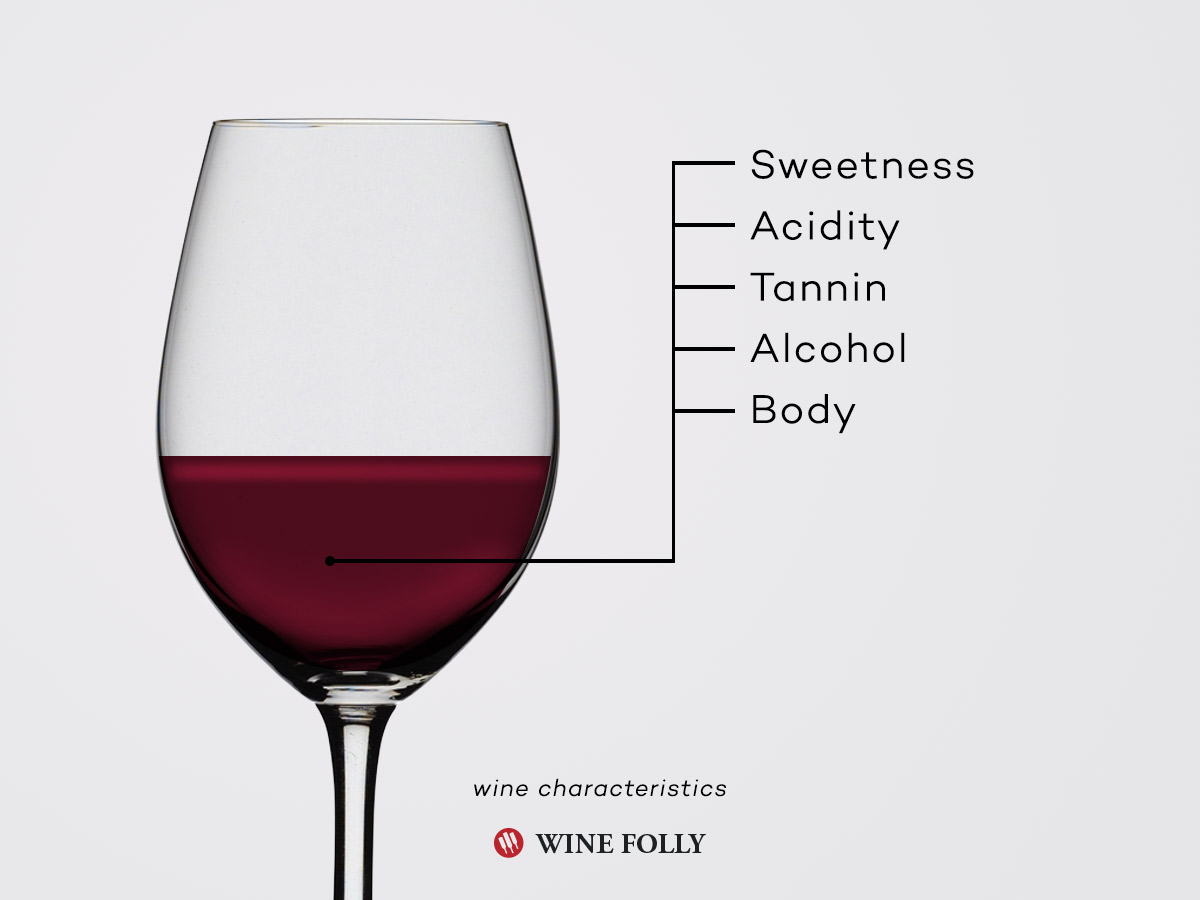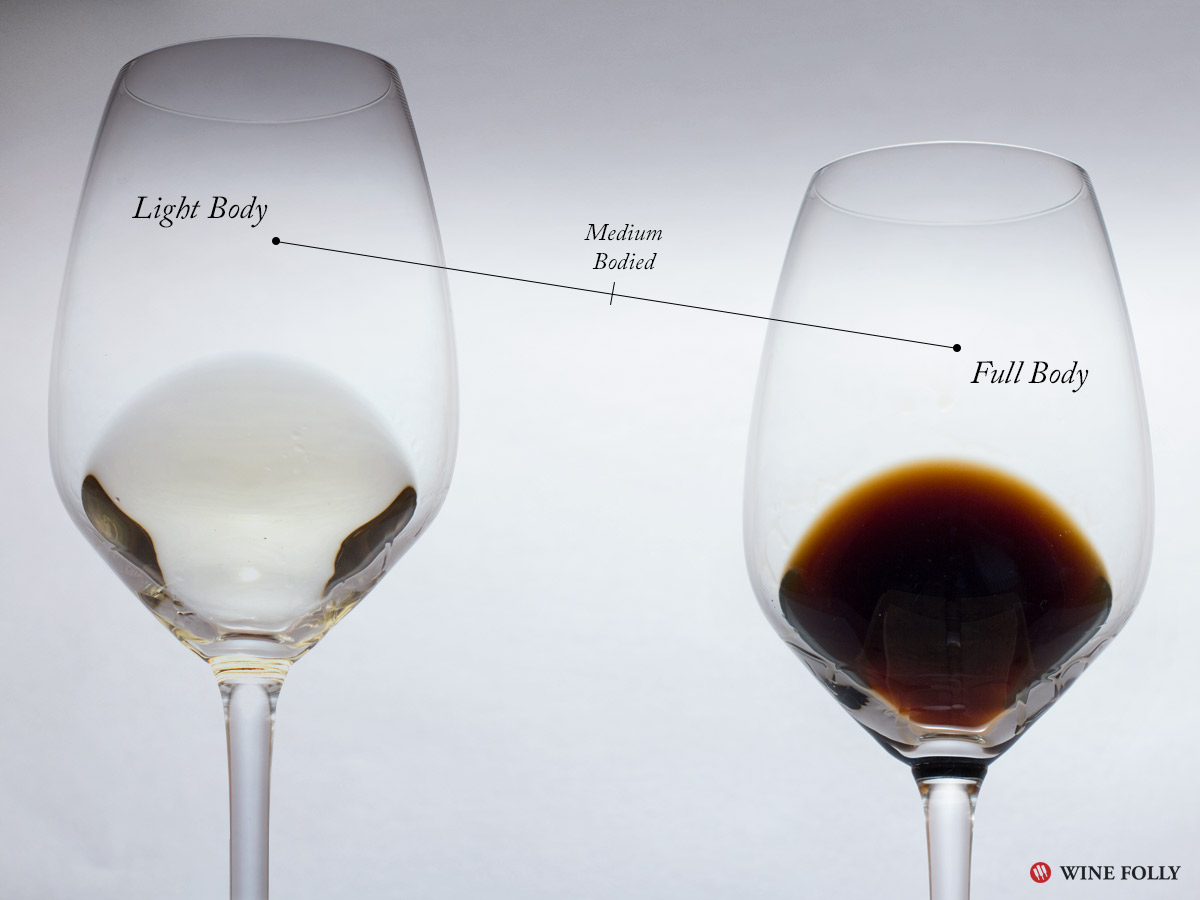By understanding the 5 basics characteristics below, you’ll have a better chance of choosing great wines.
In recent history, there has been an increasing focus on analyzing and rating wines. Unfortunately, wine ratings don’t really help us understand our unique sense of taste.

How Basic Wine Characteristics Help You Find Favorites
The best way to learn about your taste is to learn to classify wines by their fundamental traits and then pick which traits you like best.
Basic Wine Characteristics
- Sweetness
- Acidity
- Tannin
- Alcohol
- Body
It’s important to understand the basic characteristics of wine, to learn how to taste wine. Learning to identify wine characteristics helps to identify what you like about a wine.
Sweetness
“How sweet or dry (not sweet) is the wine?”
Our perception of sweet starts at the tip of our tongue, and the first impression of a wine is its level of sweetness.
To taste sweetness, focus your attention on the taste buds on the tip of your tongue. Are your taste buds tingling? (An indicator of sweetness!) Believe it or not, many dry wines can have a hint of sweetness to make them more full-bodied.
If you find a wine you like has residual sugar, you may enjoy a hint (or a lot!) of sweetness in your wine.
How to Taste Sweetness in Wine
- Tingling sensation on the tip of your tongue.
- Slight oily sensation in the middle of your tongue that lingers.
- Wine has a higher viscosity; wine tears on the side of the glass slowly. (also an indicator of high ABV)
- Dry red wines such as cabernet sauvignon often have up to 0.9 g/L of residual sugar (common with cheap wines).
- A bone-dry wine can often be confused with a wine with high tannin.
Sweetness is one of subtlest aspects of tasting wine, because so many factors can affect how you perceive sugar. Check out our Sugar in Wine Chart to sharpen up your palate!
Acidity
“How tart is the wine?”
Acidity in food and drink tastes tart and zesty. Tasting acidity is also sometimes confused with alcohol.
Wines with higher acidity feel lighter-bodied because they come across as “spritzy.” If you prefer a wine that is more rich and round, you enjoy slightly less acidity.
Acidity Characteristics
- Tingling sensation that focuses on the front and sides of your tongue. Feels like pop rocks.
- If you rub your tongue to the roof of your mouth, it feels gravelly.
- Your mouth feels wet like you bit into an apple.
- You feel like you can gleek.
Tasting acidity is tricky but we’ve created a handy graph comparing different beverages in out Understanding Acidity in Wine article.
Tannin
“How astringent or bitter is the wine?”
Tannin is often confused with Level of Dryness because tannin dries out your mouth!
What exactly are wine tannins? Tannin in wine is the presence of phenolic compounds that add bitterness to a wine.
Phenolics are found in the skins and seeds of wine grapes and can also be added to a wine with the use of aging in wood (oak). So how does tannin taste? Imagine putting a used black tea bag on your tongue. A wet tea bag is practically pure tannin that is bitter and has a drying sensation.
Tannin tastes herbaceous and is often described as astringent. While all of these descriptors sound very negative, tannin adds balance, complexity, structure, and makes a wine last longer. It’s also one most important “good for you” traits in red wines.
How Does a High Tannin Wine Taste?
- Tastes bitter on the front inside of your mouth and along the side of your tongue.
- Tannin makes your tongue dry out.
- After you swallow, you feel a lingering bitter/dry feeling in your mouth.
- Tannin can often be confused with the term “dry” because it dries your mouth out.
Tannins have incredible utility in wine and add complexity to wine that elevates the drinking experience. Plus, they have healthy aspects – Learn More About Wine Tannins
Alcohol
“How much does the wine warm your throat?”
The average glass of wine contains around 11–13% alcohol. That said, wine ranges from as little as 5.5% alcohol by volume (ABV) to as much as around 20% ABV.
We interpret alcohol using many different taste receptors, which is why it can taste bitter, sweet, spicy, and oily all at once. Your genetics actually plays a role in how bitter or sweet alcohol tastes.
Regardless, we can all sense alcohol towards the backs of our mouths in our throats as a warming sensation. Experts at tasting wine can guesstimate the level within 0.2%!
Alcohol Characteristics
- Wines with higher alcohol tend to taste bolder and more oily
- Wines with lower alcohol tend to taste lighter-bodied
- Most wines range between 11–13% ABV

Body: Light to Full-Bodied.
Are you in the mood for a light, medium, or full-bodied wine? Body is the result of many factors – from wine variety, where it’s from, vintage, alcohol level, and how it’s made. Body is a snapshot of the overall impression of a wine. You can improve your skills by paying attention to where and when it’s present.
Getting familiar with boldness in wine is one your best tools for predicting new wines you’ll enjoy – dip into the Boldness in Red Wines and take your next big wine learning leap.
Wine Characteristics Conclusions
Wine characteristics help identify and relate different wines to each other. Since over 250,000 different wines are released every year around the world, it’s helpful to think about wine characteristics in terms of the varietal and where they’re from. What’s next?
Develop your palate
Now that you’re up to speed on the basic elements of wine, it’s time to develop your palate to identify all the tasty parts of your favorite wines. Dive into our How to Taste Wine guide.
